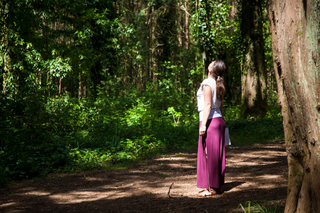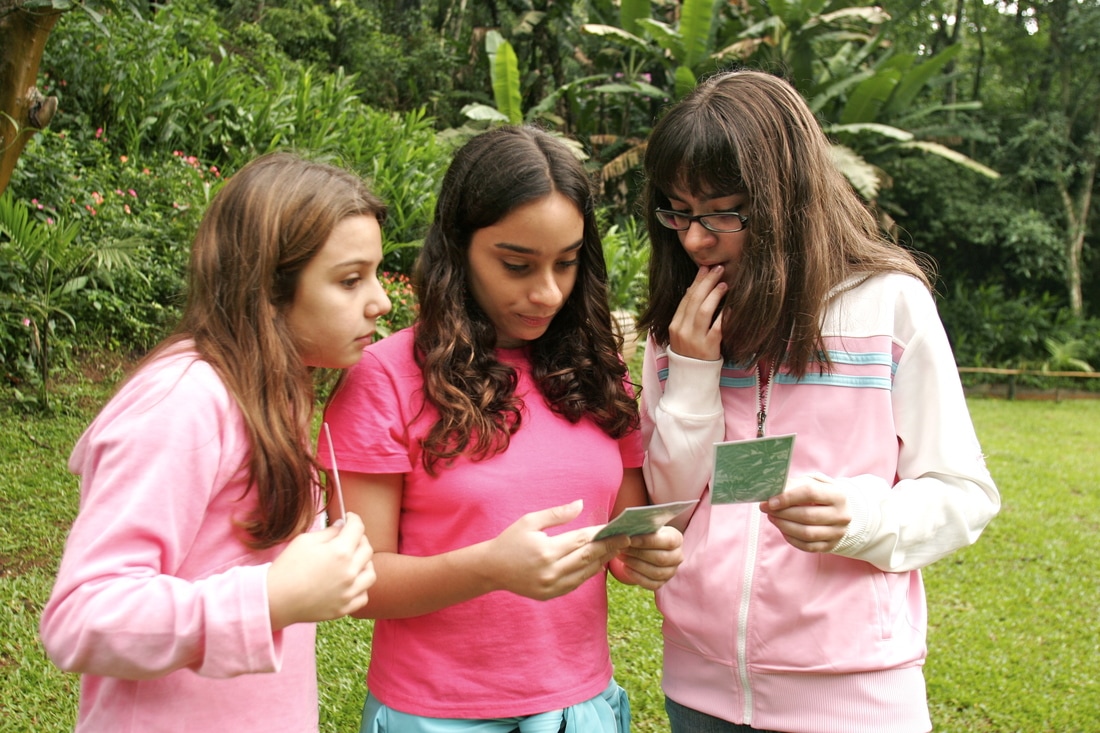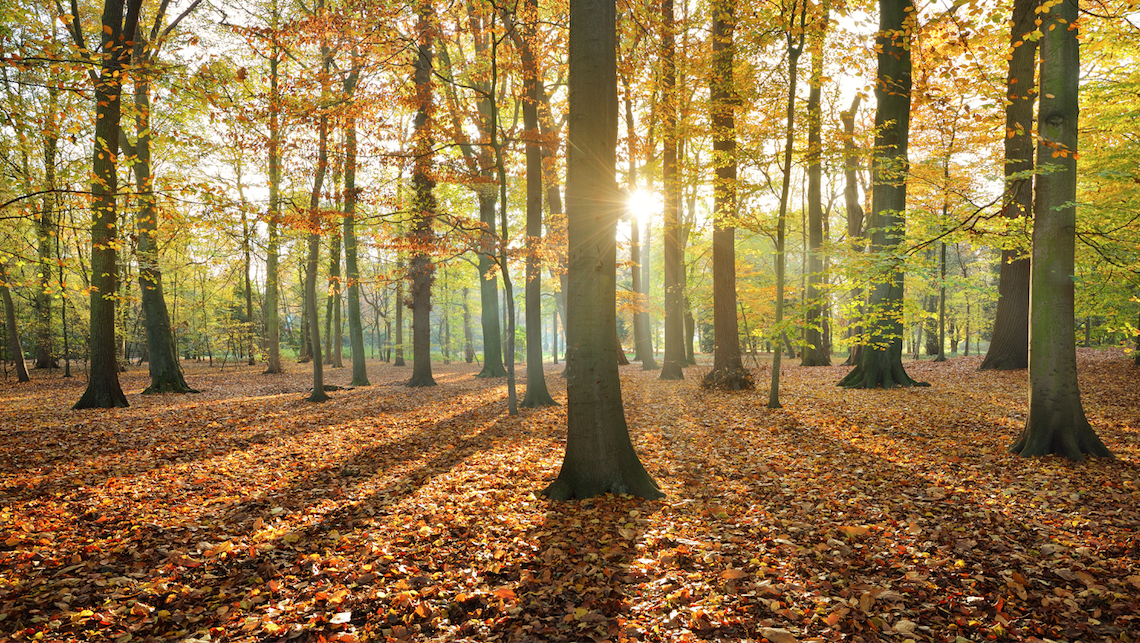|
What Is Flow Learning?
As a young naturalist I realized there is a sequence for games and activities that regardless of a group’s age, mood, and culture, always seems to work best. People everywhere respond to this sequence because it is in harmony with deeper aspects of human nature. This sequence is what I call Flow Learning and it has four stages: 1.) Awaken Enthusiasm 2.) Focus Attention 3.) Offer Direct Experience 4.) Share Inspiration. In this article, we will focus on the first stage. Stage One: Awaken Enthusiasm If people enjoy the beginning of a class, they’ll be mentally with you—and with the goals of the session. The playful games of this stage create a strong flow of energy and interest. You have achieved the purpose of this stage when you see people come alive. Because people decide within a few minutes whether they like something or not, it’s crucial to get your nature outing off to a good start. By starting with engaging (and often lively) activities, you’re far more likely to win the group’s wholehearted participation with joyful enthusiasm. Enthusiasm is defined as intense and eager enjoyment and interest. Eager interest is the motor that will power your group activities to a worthy outcome. Imagine sitting in a stationary car and trying to turn the front tires with the steering wheel. The resistance from the parked tires makes them difficult to turn, doesn’t it? However, if you start the engine and drive as little as two miles per hour, it’s easy to guide the rolling tires in the direction you want to go. Similarly, it’s easier to guide students once they’re in motion. Creating a sense of momentum will enable you to lead your group more dynamically and fruitfully. Stage One OTTER Games The Awaken Enthusiasm stage games range from ones that are active and vigorous to those that stimulate and challenge one’s intellectual curiosity. All the while, participants learn intriguing natural history information and develop happy associations with learning about nature. Human nature often resists anything new. Adults and adolescents can adopt a cool, wait-and-see stance. Age-appropriate Awaken Enthusiasm games are marvelous for winning over and engaging even skeptical groups. Wild Animal Scramble is an excellent game for encouraging passive or reserved groups to participate fully. This activity is played by pinning a picture of an animal on each person’s back, and then telling them to ask other players questions about themselves in order to find out what animal they are. (You can find Wild Animal Scramble on page 58 of my book Sharing Nature.) Children usually have lots of energy. Awaken Enthusiasm games gently guide their high energy toward constructive ends. Because the children are having so much fun, these playful games deflect potential discipline problems before they arise. The Magical Power of the Stage-One Games The magical power of the first-stage games never cease to amaze me. In 1986 I witnessed this power in Japan: the game worked their spell in spite of the awkwardness of speaking through a timid translator. After a short introductory talk, I explained the Wild Animal Scramble game. Not knowing what to expect from this gravely courteous group, I was relieved and delighted to see every somber face break into a smile of joyful expectation. I felt the energy level of the group shoot up; the resulting spirit of lively enthusiasm lasted throughout the day. Joy Should Permeate the Experience One of Sharing Nature’s core principles is that a sense of joy should permeate the experience. During Stage One of Flowing Learning there’s lots of laughter, gaiety, camaraderie, and experiential learning. Joyful play connects us with others, arouses curiosity, fosters creativity by stimulating the imagination, and helps us feel fully alive. Flow Learning’s first phase lays the foundation for its later stages, where a deeper kind of joy is experienced—the joy that comes from connecting with and belonging to the natural world. Summary: Stage One—AWAKEN ENTHUSIASM Quality: Playfulness and Alertness
The article above was excerpted from Joseph Cornell’s book Sharing Nature: Nature Awareness Activities for All Ages. To purchase the book, please click here.
5 Comments
 “Between a human and a tree is the breath. We are each other’s air.” —Margaret Bates Did you know that trees are among the world’s greatest healers? Forest Bathing, or Shinrin-yoku, is the Japanese practice of going to the forest to receive mental and physical healing. Forest plants emit essential wood oils and airborne chemicals to protect themselves from insects and decay. Research has shown that forest aromas benefit humans as well. Studies from Japan, Finland, the United States and other countries have shown that forest bathing can greatly reduce stress, increase joy level, lower blood pressure, improve concentration, strengthen the immune system, builds up vitality, and has powerful anti-cancer benefits. All cultures recognize that trees uplift the human spirit. To ancient people, trees were channels for the gods, and forests were humankind’s first temples and sanctuaries. Trees, living high in the sky, receive 95 percent of their sustenance from the atmosphere. Drawing nourishment from the sun and sky, trees express a divine benevolence. Buddhist scriptures speak of the unlimited kindness of trees—how they give generously, and offer protection and shelter to all beings. Forest bathing allows us to immerse ourselves in the benevolent and healing power of trees. All plants have phytoncides—active substances with antimicrobial properties that kill or inhibit the growth of bacteria, microscopic fungi and protozoa. Some trees release into the atmosphere volatile phytoncides that are capable of producing an effect at a distance. Studies have shown that the air in coniferous forests, and particularly in young pine forests, is particularly sterile and free of harmful microflora. In 1982, the director of the Japanese Forest Agency hypothesized that “bathing” in a phytoncide-rich environment would promote better health. He proposed the idea of forest bathing for relaxing the mind and for stress management. In 2004, the Japanese Ministry of Agriculture, Forestry and Fisheries initiated scientific studies to prove the therapeutic effects forests have on human health. These studies showed positive results for numerous areas of physical health. Since then, other studies conducted in the U.S. and Europe have found the same results. In Japan today there are 42 approved Forest Therapy Bases offering mental and physical healing. At some sites, forest therapy patients stay for two nights, during which they receive a medical checkup upon arrival, spend their free time walking in the woods and have a final checkup before leaving. Patients typically see significant improvement on their final exam. Many Japanese companies include forest therapy in their employee health-care benefits and wellness programs. —Joseph Cornell from "The Sky and Earth Touched Me" In my book, "The Sky and Earth Touched Me", I created a Forest Bathing activity to help people consciously draw more inspiration and deepen their rapport with trees. Download my Forest Bathing activity For more information about forest bathing research, please check out these articles. https://effortlessoutdoors.com/how-to-go-forest-bathing/ https://www.washingtonpost.com/news/to-your-health/wp/2016/05/17/forest-bathing-is-latest-fitness-trend-to-hit-u-s-where-yoga-was-30-years-ago/ http://www.shinrin-yoku.org/shinrin-yoku.html https://www.spafinder.com/blog/trends/2015-report/forest-bathing/ I have seen, through my own experience and that of many others, how profound moments with nature foster a true and vital understanding of our place in the world.
I remember an experience I had as a five-year-old boy that awakened in me a life-long fascination for marshes, birds, and for a life lived wild and free: I was out playing alone on a cold foggy morning when I suddenly heard a startling chorus of “whouks” coming toward me through the air. I peered intently at the thick fog, hoping for at least a glimpse of the geese. Seconds passed; the tempo of their cries increased. They were going to fly directly overhead! I could hear their wings slapping just yards above me. All of a sudden, bursting through a gap in the fog, came a large flock of pearl-white snow geese. It seemed as if the sky had given birth to them. For five or six wonderful seconds their sleek and graceful forms were visible, then they merged once again into the fog. Seeing the snow geese thrilled me deeply, and ever since then I have wanted to immerse myself in nature. Being Fully PresentWhen outdoors, many people are so engrossed in their own private concerns that they notice little of their surroundings. I once demonstrated this to a group of twenty-five teachers in Canberra, Australia. I asked them to look at a beautiful tree as long as they were able to, and to raise their hands when their attention wandered from the tree and drifted to other thoughts. In only six seconds, every hand was raised. They were amazed to discover how restless their minds were. Mere exposure to nature isn’t always enough. A friend of mine discovered this when he took his eight-year-old son hiking in the Canadian Rockies. They hiked for several hours until they came to a spectacular overlook, where they could see two glaciated valleys and several alpine lakes. He said, “That view alone made our long trip from Iowa worthwhile.” He suggested to his son that they sit and enjoy the mountain scenery. But the boy, who’d been running exuberantly back and forth along the trail, sat for five seconds, then scrambled to his feet and started running up the trail again. My friend said, he felt like screaming: “Stop! Look at this incredible view!” How can we help others experience nature deeply when their minds and bodies are so restless? The secret I’ve discovered is to focus their attention with nature activities that engage their senses — in a captivating way. For example, in the Camera Game, which is played with two people, the “photographer” taps the shoulder of the “camera” twice, and the camera-person opens his eyes on the scene before him. Because the camera-person looks for only a few seconds, his mind doesn’t have time to daydream, so the impact of his “picture” is quite powerful. Players of the Camera Game have told me that they’ve retained a vivid memory of their pictures for five, even eight years afterwards. This activity helps people of all ages experience what it is like to truly see. Other examples of simple, absorbing activities are mapping natural sounds; writing an acrostic poem about something captivating; drawing one’s “best nature view;” and Interviewing Nature, where you look for a special rock, plant, or animal that has an interesting story to tell. Then you ask it questions like, “What events have you seen in your life? What is it like to live here? Is there something you would like to tell me?” Abraham Maslow described peak experiences as especially joyous with “feelings of intense happiness and well-being” and which often involve “an awareness of transcendental unity.” Many mountaineers commonly report having these kinds of experiences. John Muir, in the following passage, explains why: “In climbing where the danger is great, all attention has to be given the ground step by step, leaving nothing for beauty by the way. But this care, so keenly and narrowly concentrated, is not without advantages. One is thoroughly aroused. Compared with the alertness of the senses… one may be said to sleep all the rest of the year.” - John of the Mountains The intense focus required by wilderness pursuits such as climbing heightens our awareness. This is why so many people avidly enjoy them. Leaders can encourage peak-like experiences on less wild walks by using experiential activities that direct people’s complete attention on nature. Concentration is concentration: people benefit from increased perception wherever there are. One educator, who hikes the Appalachian or Pacific Crest Trail every summer, practiced Sharing Nature’s reflective I Am the Mountain exercise for just four minutes. Afterwards, he said enthusiastically, “I was able to experience a state of heightened awareness that usually takes me a month in the wilderness to feel.” Meeting Nature Face to FaceScience can only describe a flowering cherry tree; it cannot help us experience the cherry tree in its totality. To develop love and concern for the earth, we need deep, absorbing nature experiences; otherwise, our relationship with nature will remain distant and abstract and never touch us deeply. Rita Mendonca, Sharing Nature Brazil’s national coordinator, recently gave a training program in the Amazon for professional ecotourism guides, some of whom had worked in the area for 40 years. Their attitude at first was that she had little to teach them. But after participating in several experiential Sharing Nature activities, a woman approached Rita and said with deep emotion, “You are helping me find the forest inside of me! We don’t know the forest in this way!” Absorbing experiences bring us face-to-face with nature. The observer and the observed become united — and only then is true empathy, knowing, and love awakened in the observer’s heart. John Muir said that the content of the human soul contains the whole world. The deeper purpose of experiential learning is to broaden our experience of life and include other realities as our own. When one is immersed in nature, Muir said, the “body vanishes and the freed soul goes abroad.” Only by expanding our sense of identity beyond our physical body and egoic self can we commune with distant horizons, brightly colored songbirds, and countless other delights. When people are quiet and receptive, fully immersed in nature, insights on the real purpose of life reveal themselves. David Blanchette is a Physical and Outdoor Education instructor at the Punahou School on Oahu Island, Hawaii, where every year he leads his thirteen-year-old students on an inspirational nature walk along a remote and wild coastline. Below are some of his students’ thoughts about life and nature after playing reflective, experiential Sharing Nature activities like Expanding Circles, Trail of Beauty, and the John Muir Game:
Fostering in others beautiful human qualities of humility, respect, love and joyful harmony with one’s environment inside and outside of oneself — as expressed by the Hawaiian students — is what nature education is really about. Becoming Good StewardsA teacher in the Southwest once asked the children in his class to draw a picture of themselves. He recalled, “The American children completely covered the paper with a drawing of their body, but my Navajo students drew themselves differently. They made their bodies much smaller and included the nearby mountains, canyon walls, and dry desert washes. To the Navajo, the environment is as much a part of who they are as are their own arms and legs.” The understanding that we are a part of something larger than ourselves is Nature’s greatest gift. With it, our sense of identity expands and, by extension, so does our compassion for all things. In order to create a society that truly reveres the natural world, we must offer its citizens life-changing experiences in nature. Saint Teresa of Avila said, “The soul in its ecstatic state grasps in an instant more truth than can be arrived at by months, or even years, of painstaking thought and study.” One moment of deeply entering into Nature can inspire in us new attitudes and priorities in life that would take years to develop. When people feel immersed and absorbed in the natural world, they are learning the highest that nature has to offer — because Nature Herself is their Teacher. |
Joseph CornellPresident & Founder of Sharing Nature Worldwide Archives
June 2017
Categories |


 RSS Feed
RSS Feed